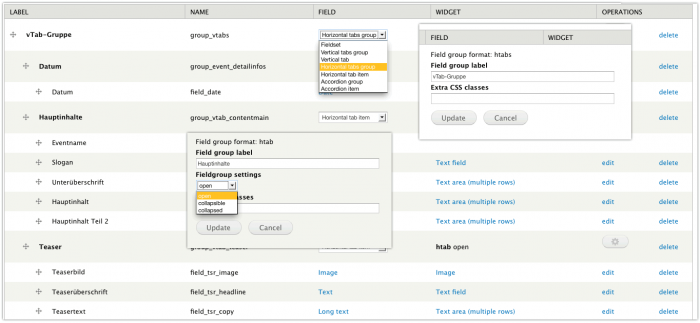
Upgrade Your Drupal Skills
We trained 1,000+ Drupal Developers over the last decade.
See Advanced Courses NAH, I know EnoughCreating multigroup widgets in Drupal 7
When the multigroup module was introduced as part of the CCK 3.x dev branch in 2009, it took CCK to a whole new level. It allowed people to easily create their own multi-value, multi-field widgets. Currently it is still only available as an alpha release for Drupal 6 though, most likely to focus more on Fields for Drupal 7 and to allow an easier upgrade path from Drupal 6 CCK 2 to Drupal 7 Fields. More information about this decision can be found on the drupal.org issue about the Status of CCK3 and plans for D7
In Drupal 7, the core Fields module doesn't offer the option to create groups, let alone multigroups. To create simple groups, you need the Field group module. It's much more powerful than its predecessor in that it allows you to not only create fieldsets, but also vertical and horizontal tabs and accordion groups.

The Field group module does not cover any multigroup functionality however, and it never will. It states so on the module's project page, and more information can be found in the issue queue.
Luckily there's the Field collection module which uses the Entity API to create multi-value, multi-field widgets. The Field collection table module adds a table formatter to the collections, and Field collection also integrates with Field group to offer amazing flexibility and power. As an added bonus, both modules integrate flawlessly with Features. At this time, there is no upgrade path from D6 Multigroup to D7 Fields with Field collection though.
About Drupal Sun
Drupal Sun is an Evolving Web project. It allows you to:
- Do full-text search on all the articles in Drupal Planet (thanks to Apache Solr)
- Facet based on tags, author, or feed
- Flip through articles quickly (with j/k or arrow keys) to find what you're interested in
- View the entire article text inline, or in the context of the site where it was created
See the blog post at Evolving Web

